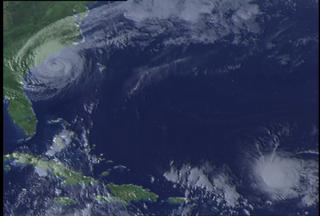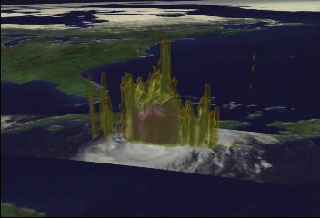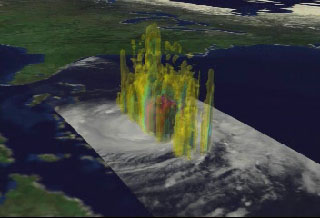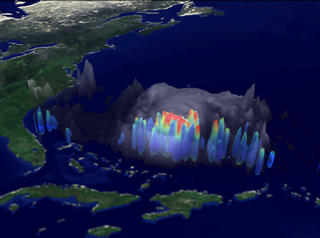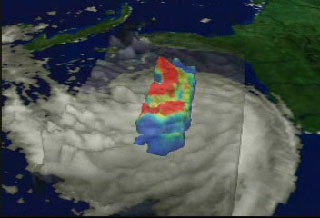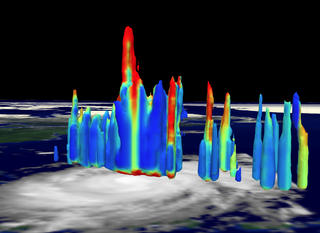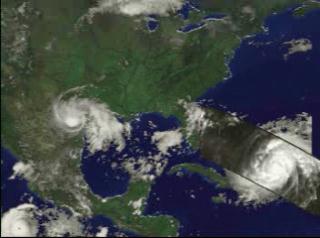Hurricane Bonnie from TRMM with Cloud Tower: August 22, 1998 (Long Version)
These compelling images are from Hurricane Bonnie showing a cumulonimbus storm cloud, towering like a sky scraper, 59,000 feet (18 kilometers) into the sky from the eyewall. Thes images were obtained on Saturday, 22 August 1998, by the world's first spaceboarne rain RADAR aboard the Tropical Rainfall Measuring Mission (TRMM), a joint U.S.-Japanese mission. Launched November 27, 1997, the TRMM spacecraft continues to provide exciting new insight into cloud systems over tropical oceans. By comparison, the highest mountain in the world, Mt. Everest, is 29,000 feet (9 kilometers) and the average commercial jet flies at barely one-half the height of Bonnie's cloud tops. Scientists believe that towering cloud structures like this are probably precursors to hurricane intensification. This was the situation with Bonnie whose central pressure dropped from 977 millibars to 957 millibars in the subsequent 24 hours. TRMM is a joint NASA and NASDA mission that was launched November 27, 1997 from the Japanese Space Center, Tanegashima, Japan.
This animation shows a fly-in to Hurricane Bonnie showing the three-dimensional structure of the precipitation as measured by the Precipitation Radar instrument on TRMM on August 22, 1998. In this animation, a surface of constant precipitation is colored by the value of the precipitation on the ground under the surface.

Video slate image reads "TRMM Hurricane Bonnie August 22, 1998 Precipitation Radar Data and Visible and Infrared Scanner (and GOES Satellite Data)".
Credits
Please give credit for this item to:
NASA/Goddard Space Flight Center Scientific Visualization Studio
-
Animator
- Greg Shirah (NASA/GSFC)
-
Scientist
- Chris Kummerow (NASA/GSFC)
Missions
This page is related to the following missions:Series
This page can be found in the following series:Datasets used
-
[GOES]
ID: 22 -
[TRMM: PR]
ID: 109 -
[TRMM: VIRS]
ID: 111
Note: While we identify the data sets used on this page, we do not store any further details, nor the data sets themselves on our site.
Release date
This page was originally published on Thursday, December 31, 1998.
This page was last updated on Wednesday, May 3, 2023 at 1:59 PM EDT.
